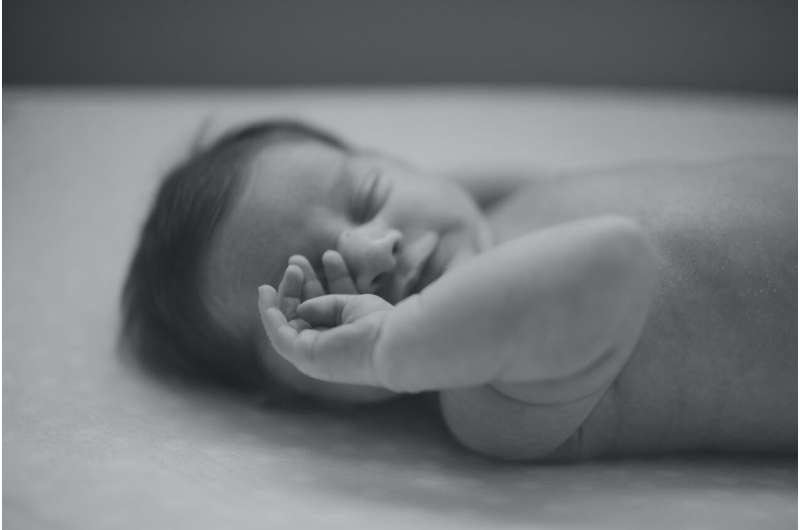Ask the Pediatrician: What should new parents know about safe sleep?

Q: I'm concerned about SIDS. What can I do to keep my baby as safe as possible while she's sleeping?
A: Every year, about 3,500 babies in the United States die suddenly and unexpectedly while they're sleeping. Most of these tragic deaths are due to sudden infant death syndrome (SIDS) or accidental deaths from suffocation or strangulation.
The American Academy of Pediatrics (AAP) recently revised its policy statement and technical report on safe sleep, which provides tips to reduce the risk of all sleep-related infant deaths. Read on for some of the most important tips for safe infant sleep. Unless mentioned otherwise, all these recommendations are for babies up to 1 year of age. Talk with your pediatrician if you have questions about any of the recommendations.
Although there's no guaranteed way to prevent SIDS, research tells us that a safe sleep environment can help reduce your baby's risk of SIDS. We also know how to prevent unintentional suffocation and strangulation in bed. The AAP guidance on safe sleep helps to protect babies from these deaths.
Babies should be placed to sleep on their backs. Babies who sleep on their backs are much less likely to die suddenly and unexpectedly than babies who sleep on their stomachs or sides. The problem with the side position is that your baby can roll more easily onto their stomach. Some parents worry that babies will choke when they're on their backs. But your baby's airway anatomy and their gag reflex will keep that from happening. Even babies with gastroesophageal reflux disease (GERD) should sleep flat on their backs.
Some babies will roll onto their stomachs. You should always place your baby to sleep on their back, but if they're comfortable rolling both ways (back to tummy, tummy to back), then you don't need to keep turning your baby to their back again.
Use a firm, flat sleeping surface. A firm surface means that it shouldn't indent when your baby is lying on it. Any surface that inclines more than 10 degrees isn't safe for your baby to sleep on.
Breastfeed as much, and for as long as, you can. Keep your baby's environment smoke-free.
Other tips on sleeping areas:
- Place your baby in a crib, bassinet, portable crib or play yard that meets the safety standards of the Consumer Product Safety Commission (CPSC).
- Check the CPSC website to make sure your crib hasn't been recalled, especially if it's not new.
- Make sure your crib mattress is designed for your specific crib and that it fits tightly. Use a fitted sheet only; nothing else should be in the crib with your baby.
- Don't use a crib that doesn't have instructions, is missing hardware or that's broken.
- Alternative sleep surfaces are only considered a safe option if they comply with the June 2021 CPSC rule that all infant sleep products must meet the existing federal safety standards for cribs, bassinets, portable cribs or play yards. This includes inclined sleep products, hammocks, baby boxes, in-bed sleepers, baby nests and pods, compact bassinets, travel bassinets and baby tents. If a product doesn't meet federal safety standards, avoid it.
- If your baby falls asleep in a car seat, stroller, swing, infant carrier or sling, you should move them to a firm sleep surface on their back as soon as possible.
- Don't use products for sleep that aren't specifically marketed for infant sleep. Examples include Boppy pillows and Dock-a-Tots.
- In an emergency, you can temporarily put your baby to sleep in a box, basket, dresser drawer or something similar. It should have thin, firm padding. As soon as you can get a CPSC-approved sleep surface, move your baby to that instead.
- If you need financial help, there are organizations throughout the United States that provide low-cost or free sleep surfaces. Check with your local Social Services agency.
- Instead of bed sharing, try room sharing. This means keeping your baby's sleep area in the same room where you sleep for at least the first six months. Place your baby's crib, bassinet, portable crib or play yard in your bedroom, close to your bed.
- Soft objects and loose bedding should be kept out of cribs. These objects can increase your baby's risk of entrapment, suffocation or strangulation. This includes pillows and pillow-like toys, quilts, comforters, mattress toppers, non-fitted sheets, blankets, toys, bumper pads or related products that attach to crib slats or sides.
- Don't use weighted blankets, sleepers, swaddles or other weighted objects on or near your baby.
- Babies should never sleep on couches, sofas, or stuffed armchairs, either by themselves or with others.
Dr. Rachel Y. Moon is a pediatrician and SIDS researcher at the University of Virginia. She is also a professor of pediatrics at the University of Virginia School of Medicine and the chair of the AAP Task Force on SIDS.
More information: For more information, go to HealthyChildren.org, the website for parents from the AAP.
2022 Tribune Content Agency, LLC.




















